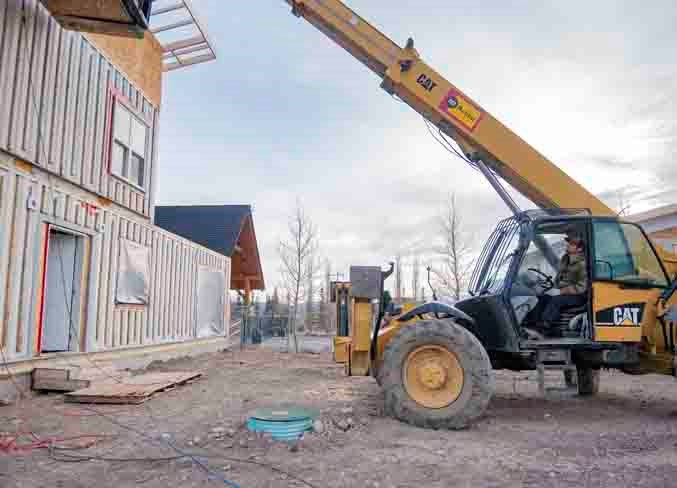Thousands of used shipping containers, known as Sea-Cans, which transported materials across the ocean from China to Canada will be getting a new life just outside of Cochrane. The Ghost Lake CottageClub, home to dozens of year round vacation cabins, has 65 lots slated for Sea-Can cottages and so far there are already four orders from prospective owners. At the time of order, the metal shipping crates will be prepped at a factory – windows and doors carved out, and then the units will be insulated from top to bottom with a spray foam. They will then be brought to the site and craned onto a concrete slab where the finishing work will begin; drywall will go up, floors and amenities installed, walls painted – the full works. The metal exteriors will also be overhauled to match the aesthetic of the current cottages in the area. “By the time we’re finished with it, you won’t be able to tell the difference between an existing cottage and a Sea-Can cottage,” said Don Stengler, project manager. He said the shift to Sea-Can cottages over the current wood frames is to make the CottageClub a little greener. “I like using sustainable products. I like recycling something if I can re-purpose it somehow,” Stengler said. “I also look for quality. Everything in the CottageClub is high quality, low maintenance and the Sea-Can Cottages fit into that model very well.” Stengler predicts the Sea-Can models to last “several hundred” years and to be less susceptible to fires with their steel walls and concrete foundation. The Sea-Can cottages are roughly the same price as the wood-frame cottages, and lots start at $109,000. The cottages can be modified to suit personal preferences and different sizes. The larger the cabin, the more shipping containers used. Each container averages eight to nine feet tall, eight feet wide and the length varies from 20 to 30 to 40 foot options. “We’ve used four Sea-Can’s as a shell and joined them together like building blocks to create a comfortable place for cottagers to live”, Stengler said. “A single Sea-Can has a narrow interior spec, but when three or more are placed together with a proper floor plan, it becomes a comfortable cottage. While the shipping containers might seem like a cheaper option, it’s the spray foam insulation that ends up being the main cost driver, Stengler explained. The first Sea-Can cottage began construction at the end of November, and it’s designated for the CottageClub caretaker, who is not yet hired. While, the first Sea-Can cottage is connected to a gas line, Stengler said other cottages will be built with the option to install solar panels for those looking to further reduce their environmental footprint. As for renovations down the road, Stengler said it would be an “almost impossible” task, at least when it comes to moving walls or windows. Changing the paint, flooring or countertops for example will be the same as any other home. “I just think they’re going to have a really long life cycle,” Stengler said. “Anyone is welcome to come out if they want to take a look at them.” CottageClub is a year round, cottage resort located just 15 minutes from Cochrane on Highway 1A and Range Road 60. For more details contact Don Stengler at 403-214-0292, or email [email protected] or visit https://www.cottageclub.ca/.




